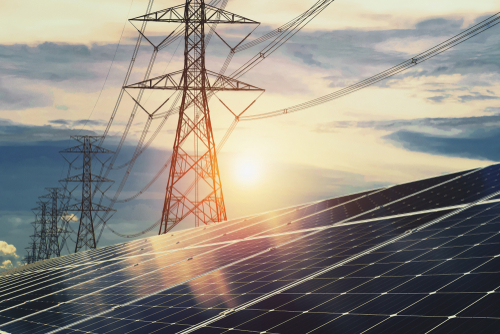DOE awards $34M to 11 projects to help connect clean energy to grid

The U.S. Department of Energy (DOE) has picked 11 projects to receive $34 million for tools to help the electricity grid run on wind and solar energy.
Projects selected for this funding program, called the Solar Energy Technologies Office’s Operation and Planning Tools for Inverter-Based Resource Management and Availability for the Future Power System (OPTIMA), will advance tools that help grid planners and operators optimize the integration of these technologies. The tools that thirty have developed will allow the grid to be more flexible and resilient to changes like weather events and fluctuation in demand. The 11 projects are:
• Florida International University (Miami, FL): $2.4 million
• Washington State University (Pullman, WA) $2.4 million
• Georgia Institute of Technology (Atlanta, GA): $2.8 million
• Iowa State University (Ames, IA): $3 million
• Midcontinent Independent System Operator (Carmel, IN): $3 million
• National Renewable Energy Laboratory (Golden, CO): $3.2 million
• National Renewable Energy Laboratory (Golden, CO): $3.3 million
• University of Connecticut (Storrs, CT): $3.3 million
• Arizona State University (Tempe, AZ): $3 million
• Pacific Northwest National Laboratory (Richland, WA): $3.6 million
• Quanta Technology (Raleigh, NC): $3.8 million.
“We can’t deploy clean energy if we can’t get renewable sources connected onto our grid,” U.S. Secretary of Energy Jennifer Granholm said. “Thanks to support from the Biden-Harris Administration, we are developing new, state-of-the-art tools to break up logjams to connect more clean energy sources to the grid even faster, giving Americans access to more affordable and resilient sources of clean energy.”
The DOE also announced a new funding opportunity as it looks to connect to the grid the hundreds of gigawatts of solar energy, wind energy, and energy storage resources are expected to come online in the next few years.
To address these interconnection challenges, the DOE rolled out a new $10 million funding opportunity, the Solar and Wind Interconnection for Future Transmission (SWIFTR) initiative. This funding opportunity aims to improve software tools that make the interconnection study process for proposed renewable energy plants more efficient. It also seeks to provide developers with key data on transmission system characteristics such as stability, voltage, and grid strength. These tools will reduce wait times so that new clean energy projects can come online faster to meet growing electricity demand and reduce outcome uncertainty for developers and utilities.
The SWIFTR funding opportunity is part of the DOE’s Interconnection Innovation e-Xchange (i2X), which launched in 2022 via the Bipartisan Infrastructure Law. The goal of this program is to enable the faster, simpler, and fairer interconnection of clean energy and energy storage while enhancing the reliability, resilience, and security of the electric grid, for both distribution and bulk power systems.
